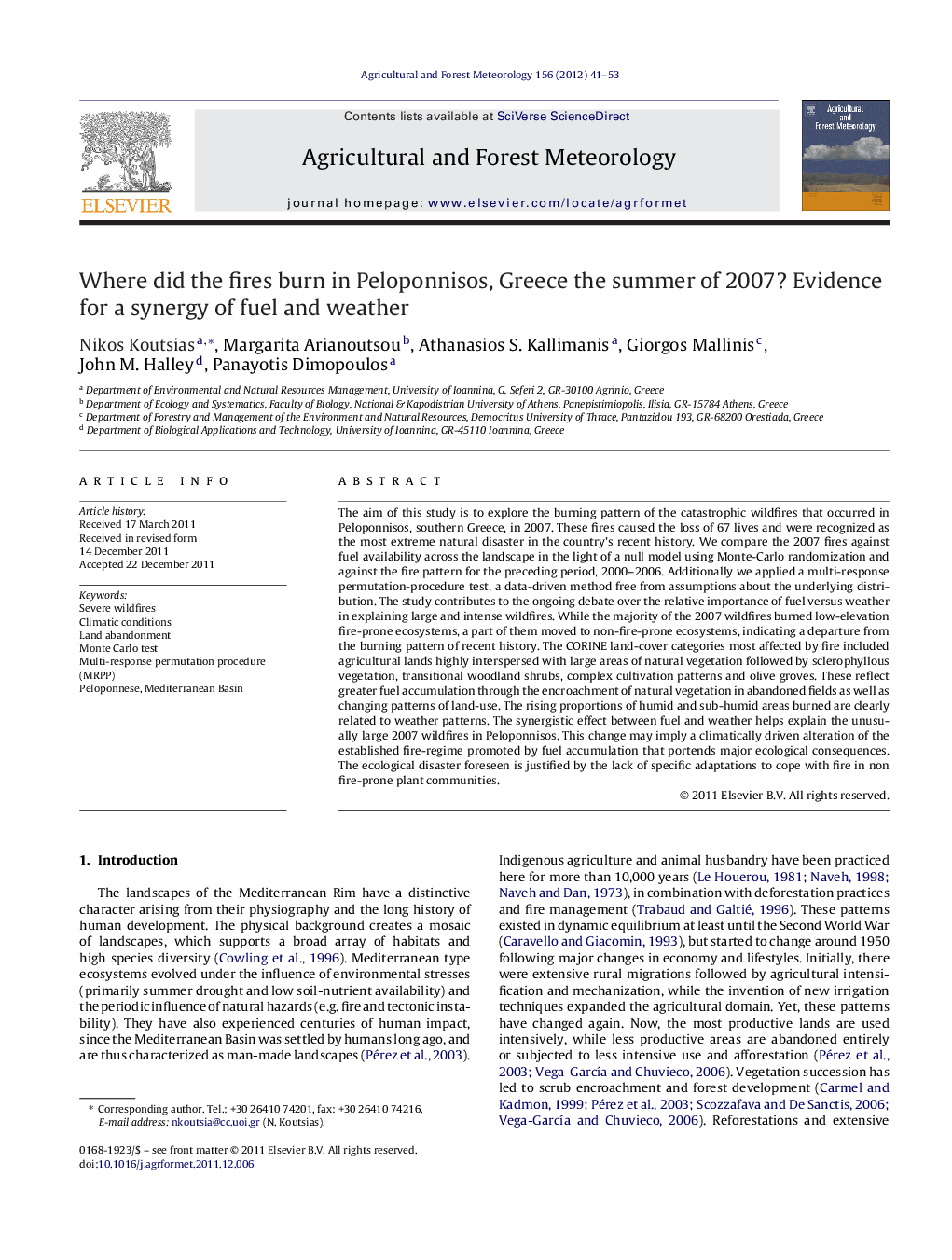| کد مقاله | کد نشریه | سال انتشار | مقاله انگلیسی | نسخه تمام متن |
|---|---|---|---|---|
| 81982 | 158365 | 2012 | 13 صفحه PDF | دانلود رایگان |

The aim of this study is to explore the burning pattern of the catastrophic wildfires that occurred in Peloponnisos, southern Greece, in 2007. These fires caused the loss of 67 lives and were recognized as the most extreme natural disaster in the country's recent history. We compare the 2007 fires against fuel availability across the landscape in the light of a null model using Monte-Carlo randomization and against the fire pattern for the preceding period, 2000–2006. Additionally we applied a multi-response permutation-procedure test, a data-driven method free from assumptions about the underlying distribution. The study contributes to the ongoing debate over the relative importance of fuel versus weather in explaining large and intense wildfires. While the majority of the 2007 wildfires burned low-elevation fire-prone ecosystems, a part of them moved to non-fire-prone ecosystems, indicating a departure from the burning pattern of recent history. The CORINE land-cover categories most affected by fire included agricultural lands highly interspersed with large areas of natural vegetation followed by sclerophyllous vegetation, transitional woodland shrubs, complex cultivation patterns and olive groves. These reflect greater fuel accumulation through the encroachment of natural vegetation in abandoned fields as well as changing patterns of land-use. The rising proportions of humid and sub-humid areas burned are clearly related to weather patterns. The synergistic effect between fuel and weather helps explain the unusually large 2007 wildfires in Peloponnisos. This change may imply a climatically driven alteration of the established fire-regime promoted by fuel accumulation that portends major ecological consequences. The ecological disaster foreseen is justified by the lack of specific adaptations to cope with fire in non fire-prone plant communities.
► A part of 2007 wildfires moved to non fire-prone ecosystems.
► There is a departure from the burning pattern of recent history.
► The land principally occupied by agriculture with significant areas of natural vegetation was mostly burned.
► Fuel and weather synergism explains the extreme wildfires of 2007 in Peloponnisos, Greece.
Journal: Agricultural and Forest Meteorology - Volume 156, 15 April 2012, Pages 41–53